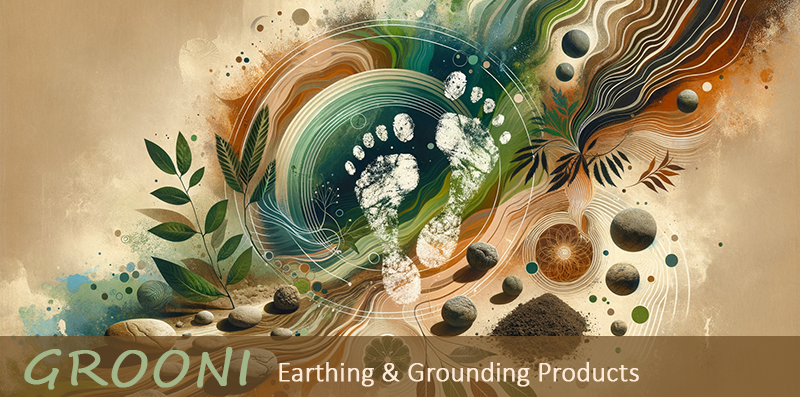
Inflammation can feel like your body’s alarm system, going off when there’s no fire. While inflammation is a natural response to injury or illness, chronic inflammation can lead to discomfort, fatigue, and even long-term health issues. Earthing, also known as grounding, is one natural approach that’s gaining attention for its potential to reduce inflammation without any side effects.
Contents
- What is Earthing or Grounding?
- How Grounding Reduces Inflammation
- Different Ways to Ground for Inflammation Relief
- The Science Behind Grounding and Inflammation
- How to Make Grounding a Daily Habit
- Frequently Asked Questions About Grounding for Inflammation
- Giving Grounding a Try for Natural Inflammation Relief
What is Earthing or Grounding?
Earthing, or grounding, is the practice of connecting directly with the Earth. This can mean walking barefoot on grass, sand, or soil, or using grounding tools like mats, sheets, or patches indoors. The Earth carries a mild negative charge, and when you make contact with it, electrons flow into your body, balancing your own electrical charge. These electrons have powerful antioxidant effects, helping neutralize free radicals, which play a big role in chronic inflammation.
Why Our Bodies Need Grounding
Our modern lifestyle exposes us to constant electromagnetic fields (EMFs) from devices, screens, and Wi-Fi. Over time, this exposure builds a positive charge in the body, which can cause inflammation and disrupt our natural rhythms. Grounding balances out this charge by introducing negative electrons from the Earth, which can help calm inflammation and promote overall wellness.
How Grounding Reduces Inflammation
Inflammation is a response to injury, illness, or stress, where the body releases free radicals. Free radicals are molecules that, when unbalanced, can damage cells and cause inflammation. Grounding, however, helps balance these free radicals, reducing their inflammatory effect and promoting a sense of calm and recovery in the body.
Neutralizing Free Radicals
Free radicals are like the “bad guys” in your body, causing cellular damage and promoting inflammation. Grounding allows electrons from the Earth to enter the body, which neutralizes these free radicals. By stabilizing these molecules, grounding helps reduce the oxidative stress that often leads to chronic inflammation.
Balancing Cortisol Levels
Cortisol, the body’s stress hormone, can also drive inflammation when levels stay high. Grounding has been shown to reduce cortisol, helping to lower stress and calm the body’s inflammatory response. For people dealing with chronic stress, grounding offers a natural way to manage cortisol and support inflammation reduction.
Different Ways to Ground for Inflammation Relief
If grounding can help reduce inflammation, then how do you get started? Here are a few simple ways to incorporate grounding into your routine, even if you live in an urban area.
Walk Barefoot on Natural Surfaces
One of the most effective ways to ground is simply by going barefoot on natural surfaces like grass, sand, or soil. Spend just 10-15 minutes barefoot in a park, garden, or even on a sandy beach to let the Earth’s electrons flow into your body. This is grounding in its simplest form and is accessible for most people.
Use Grounding Mats and Sheets
If going outside isn’t an option, grounding mats and sheets provide an easy way to ground indoors. Place a grounding mat under your desk or use a grounding sheet on your bed at night to benefit from grounding while you work or sleep. These tools connect to the Earth through a grounded outlet, allowing electrons to flow to your body.
Try Grounding Patches for Targeted Relief
Grounding patches are small, portable tools you can place on areas experiencing pain or inflammation. These patches work like grounding mats but are designed to provide direct contact for targeted relief. Simply apply a patch to a sore muscle or joint, and let the grounding process go to work.
The Science Behind Grounding and Inflammation
Research on grounding has shown promising results when it comes to reducing inflammation. Studies suggest that grounding can improve blood flow, lower cortisol, and reduce markers of inflammation, which all contribute to a healthier, less inflamed body. While more research is always welcome, existing studies provide a strong foundation for grounding as a natural inflammation-fighting tool.
Improved Blood Flow and Oxygenation
Grounding has been shown to improve circulation, which brings more oxygen and nutrients to tissues. Improved blood flow also helps flush out toxins and reduce swelling, providing relief from inflammation. For anyone dealing with chronic pain or conditions like arthritis, grounding may support better blood flow and promote healing.
Reducing Inflammatory Markers
Studies have found that grounding reduces inflammatory markers in the body, such as C-reactive protein (CRP). CRP levels rise in response to inflammation, so a reduction in CRP is a strong indicator of reduced inflammation. Grounding’s ability to lower these markers highlights its potential as a natural remedy for managing inflammation.
How to Make Grounding a Daily Habit
Consistency is key when it comes to grounding. Here are some tips to help you make grounding a regular part of your daily routine, whether you’re at home, at work, or on the go.
Morning Barefoot Walks
Start your day with a quick grounding session by taking a barefoot walk in your yard or a nearby park. This helps set a calm, grounded tone for the day, reducing stress and supporting inflammation relief from the get-go.
Grounding While You Work
If you work from home, use a grounding mat under your desk. This simple addition lets you ground for several hours while working, helping to reduce inflammation without needing to step outside. Many people find they feel more focused and less tense when grounding while working.
Grounding Before Bed
Using a grounding sheet on your bed is an easy way to ground all night long. Overnight grounding has been shown to reduce cortisol and promote restful sleep, which plays a big role in inflammation reduction. Give it a try and see if you wake up feeling more refreshed and less sore.
Frequently Asked Questions About Grounding for Inflammation
If you’re new to grounding, you may have some questions. Here are a few common ones to help you get started.
How Long Should I Ground Each Day?
Most people find that 20-30 minutes a day of grounding provides noticeable benefits. However, more grounding can offer additional support. If you’re using a grounding mat or sheet, feel free to ground for longer periods, especially if you’re dealing with inflammation or chronic pain.
Are There Any Side Effects to Grounding?
Grounding is generally safe and has no known side effects. However, if you use grounding products that connect to an outlet, make sure your outlet is properly grounded. Those with medical devices like pacemakers should consult a doctor before using grounding products.
Can Grounding Replace Anti-Inflammatory Medications?
Grounding can complement, but not necessarily replace, traditional anti-inflammatory treatments. It offers a natural way to reduce inflammation and promote wellness, but if you’re managing a chronic condition, grounding is best used alongside other treatments as recommended by your healthcare provider.
Giving Grounding a Try for Natural Inflammation Relief
Grounding is a simple, effective way to connect with the Earth and promote natural inflammation relief. By balancing free radicals, reducing cortisol, and improving blood flow, grounding provides a holistic approach to wellness that’s easy to incorporate into daily life. Whether you’re dealing with chronic inflammation or just looking to support overall health, grounding offers a natural solution that brings you back to the basics. Take a barefoot walk, try a grounding mat, and see how reconnecting with the Earth can make a difference in how you feel.

